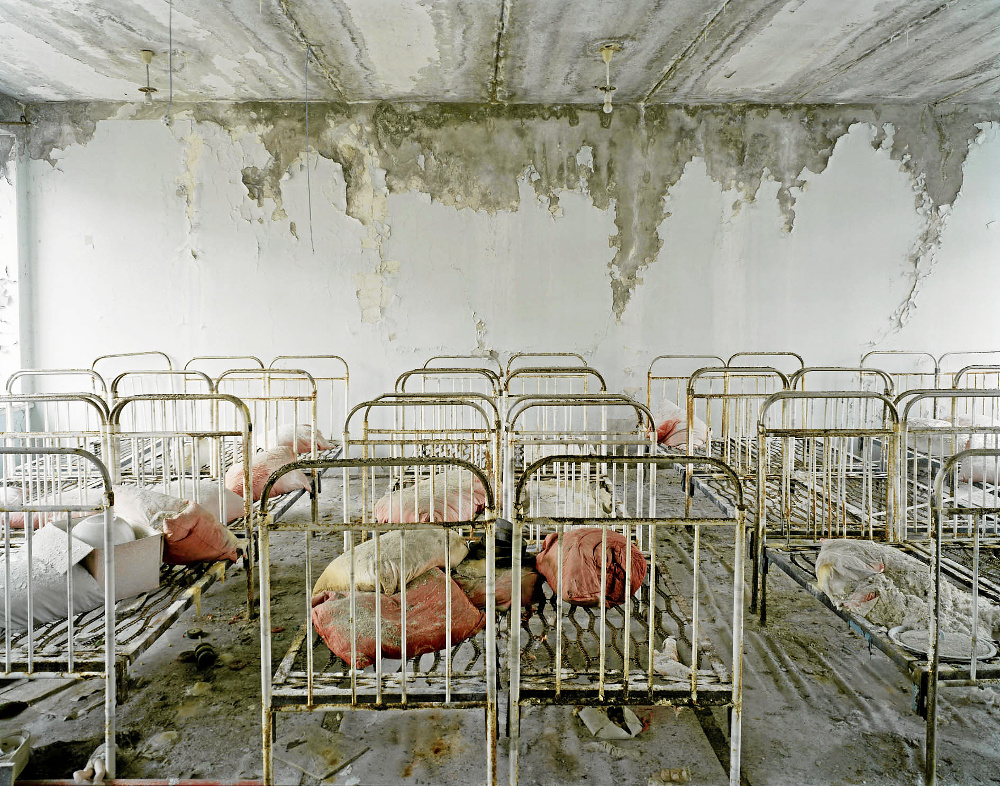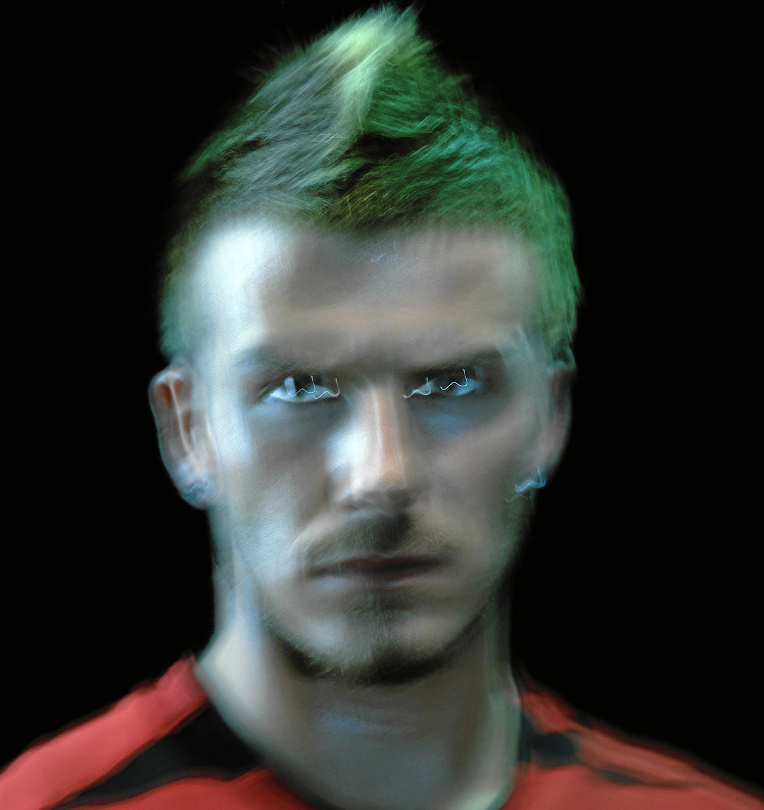Poetic images: Nadav Kander's pictures are meant to challenge
people to interpret them in their own way.(Supplied)
The adage "a prophet has no honour in his own country" would be true for photographer Nadav Kander if only he had a country that he could really claim as his own. But where, exactly, is home for the award-winning photographer? He was born in Israel, grew up in South Africa and left for Britain when he was 21.
In an interview with Lens Culture, he said: "I don't feel Israeli, I don't feel South African and I don’t feel English."
This feeling of rootlessness – or, if you will, lostness – is one that he used to devastating effect in Yangtze, The Long River, his award-winning series. And yet, in a phone conversation with him while he was in London, he seemed genuinely touched that finally a South African newspaper had sought him out after seeing his photographs for Granta’s Best of Young British Novelists 4.
"It would make me proud to be noticed in South Africa because I never was [noticed] as a child or at school."
Kander was born in Israel to a German father and a Russian mother but they settled in South Africa in 1964. He once lived in Houghton and had the young William Kentridge, before his rise to fame as an artist, as a neighbour. The photographer was educated at the Woodmead and King David schools.
When he was 13, he bought his first camera, a Pentax, in Orange Grove, Johannesburg.
"I used to take pictures of things around me, close-up images. I was always looking for things that were slightly strange, odd images, people turned away from me, people covering their faces.
"I think there were people in my school who were older than me who had a dark-room club and I got a little interested. But the most important person was Louis Yudelman, the father of my friend Brett.
"Yudelman still lives in Johannesburg and he's still a great photographer. He saw some of my pictures and he said, ‘let me teach you how to print'."
Printing is something he could have learnt from any photographer but what Kander did learn from Yudelman was “to show human feelings in a picture”.
“I can now see what I liked about his pictures. The picture that I remember by Yudelman showed a graveyard and a tunnel and there was something about travel, the unknown, the inevitability of death and the undergroundedness of it.”

He recalled that one picture was superimposed on another, giving the image a layering that made the pictures more meaningful. "They almost become dreamlike," he said.
Kander went to Britain after a two-year stint in the air force. "I wanted to leave South Africa; I was unhappy there. It was to England that I wanted to go. I do feel I was running away; I just didn’t know it at the time."
Reminiscing about growing up in apartheid South Africa, Kander said: "As a white kid in South Africa, it was all around you: the aggression, the unfairness. I am not sure how aware I was; unless you had aware and vocal parents, I [don’t think] you knew how to untangle the feelings, knowledge and emotions."
Kander got to Britain via a circuitous journey that took him to Luxembourg, the Netherlands and then Britain. After several hard months, he found a job as an assistant to photographer Peter Hopkins. "And then one day an agent saw my work and said he would represent me."
Kander has become famous for shooting portraits of global icons and landscapes. In one video interview, he speaks about how he eschews the documentarian’s approach to photo-graphy. "I'm not interested in truth and photography as a vehicle for it."
Take, for instance, his ground-breaking work on the Yangtze River. More people live on its banks than in the whole of the United States. Instead of photographs that could, in his words, have become National Geographic-type images, his pictures are forlorn and haunting.
The river, always, is the muse. The drama of China’s rapid industrialisation is staged along the Yangtze. There are new, brightly coloured high-rise blocks, or city vistas that seem to sigh and cough from the smog spat out by the factories; tragic city folk, for whom change has come too soon or is too little, stare into the empty distance, and small, claustrophobic rooms are lit by soft light reflected by the vast, endless world of the Yangtze River. Apparently 10 000 ships a day enter and leave the Yangtze. For this work, he was awarded the prestigious Prix Pictet in 2009.
The photographer has also shot the devastation wrought by the Chernobyl nuclear disaster in Ukraine in 1986. The body of work is titled Chernobyl, Half Life.
One of the dictionary definitions of half-life, a concept from nuclear physics, says it is "the time required for half the quantity of a drug or other substance deposited in a living organism to be metabolised or eliminated by normal biological processes".
Confronted by the visibly stagnant rotor blades of contaminated military helicopters, the desolate logs that have the double distinction of being eaten up by both time and radioactive elements, or an arid, harshly lit sleeping room of an abandoned kindergarten, you are not left in two minds about humankind’s capacity for self-destruction.
In a video interview with the National Portrait Gallery, he said: "For me, the only interest is to express one’s self, one’s view, leaving enough questions unanswered. In any frame that I take, people can respond in their own way and tell their own stories."
One of the few men in the world with the access codes to one of the world’s biggest and deadliest nuclear armouries is United States President Barack Obama. Kander has shot him and a host of other celebrities, politicians and sports stars.
 ? Photography supplied
? Photography supplied
Others who have sat for him include Rwandan strongman Paul Kagame, Jamaican sprinter Usain Bolt, former England and Manchester United midfielder David Beckham, British actress Judi Dench and, this year, 20 writers selected by Granta magazine as Britain’s most exciting young novelists.
Kander’s portraits of Obama are exemplars of the photographer’s mantra of "manipulating light to reveal something".
The shots seem to inhabit that halfway place where darkness hasn’t completely taken over and yet where light is tentative and diffident. Bathed in that in-between world of semi-darkness and semi-light, the portraits sometimes acquire a ghoulish feel and sinister textures.
The Beckham who stares at us from Kander's picture is the Beckham we’ve never seen, not on our television screens or anywhere else. But it must have been the Beckham whose right foot was especially deadly at free kicks, a terror of that tragic man between the posts, the goalkeeper.
By using ingenious props and spectacular, if weird, poses, his eye turns what could be bland portraits of people whose lives are daily updated on social media into meditations and explorations on the meaning, and/or meaninglessness, of celebrity.
"I enjoy photographing portraits of people who are culturally relevant to our time. I wish very much I had photographed Nelson Mandela; I don’t think I can do that now."
Kander is something of a star and his work has been shown in Paris, London, Tokyo, Lausanne and Berlin but not in South Africa.
"I would be happy to do that but it’s not something that I have reached out for," he said, although he, his wife and two children visit the country regularly.
Insofar as South Africa can be called his home, Kander is a prophet who should be honoured here.